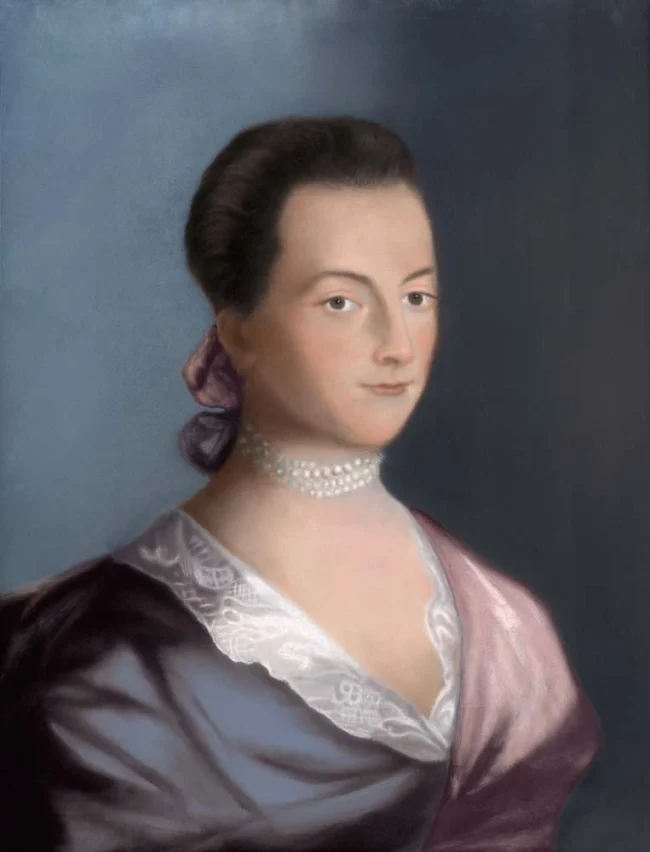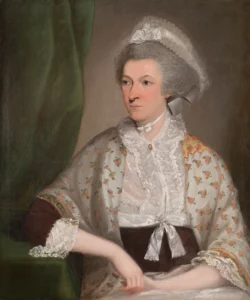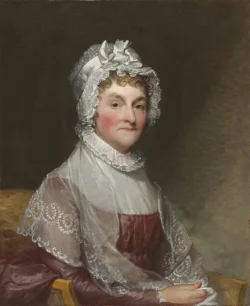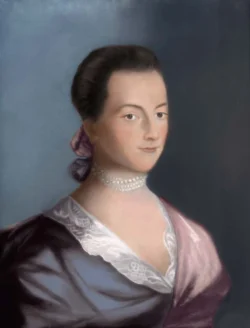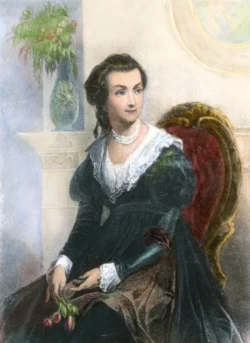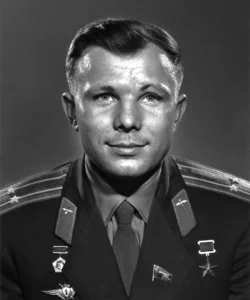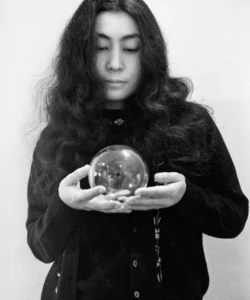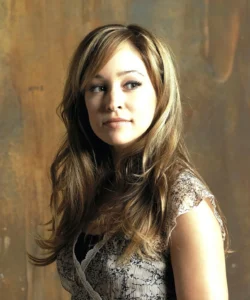Name: Abigail Smith Adams
Introduction: Abigail Adams was an influential American political advisor, letter writer, and early advocate for women’s rights and the abolition of slavery. She is renowned as the wife of John Adams, the second President of the United States, and the mother of John Quincy Adams, the sixth President. Her extensive and eloquent correspondence with her husband provides invaluable insights into the American Revolution and the early years of the republic.
Date of birth: November 11, 1744
Died: October 28, 1818 (aged 73), in Quincy, Massachusetts, U.S.
Height: Information not consistently available.
Place of birth: Weymouth, Massachusetts Bay Colony (part of British America, now U.S.)
Family:
- Parents’ names: Reverend William Smith (father, a Congregationalist minister) and Elizabeth Quincy Smith (mother). Her mother came from the prominent Quincy family.
- Siblings: She was the second of four children. She had three sisters and one brother (their names are not always consistently listed, but include Mary Smith Cranch and Elizabeth Smith Shaw Peabody).
- Spouse: John Adams (m. October 25, 1764), who would later become the second President of the United States. He was also her third cousin.
- Children:
- Abigail “Nabby” Adams Smith (daughter, 1765–1813)
- John Quincy Adams (son, 1767–1848), who became the sixth President of the United States.
- Susanna Adams (daughter, 1768–1770) – died in infancy.
- Charles Adams (son, 1770–1800)
- Thomas Boylston Adams (son, 1772–1832)
- Elizabeth Adams (daughter, died in infancy)
- Relatives: She was related to the prominent Quincy family through her mother. Her children include a future U.S. President. Her grandson, Charles Francis Adams, later served as Abraham Lincoln’s ambassador to England.
Profession: Homemaker, farm manager, financial manager, political advisor, letter writer, early women’s rights advocate, abolitionist.
Nationality: American (born British colonial)
Religion: Unitarian. She grew up in a devout Congregationalist family and remained close to her faith. Later in life, she identified as a Unitarian.
College or university attended: None. As was typical for girls of her era, Abigail Adams did not receive a formal education. However, she was self-taught, learning to read and write at home. She had extensive access to her father’s and grandfather’s large libraries, where she avidly read history, philosophy, theology, literature (including Shakespeare), and politics.
Biography and What Famous For:
Abigail Smith grew up in a well-educated and religious household. Despite the lack of formal schooling, her intellectual curiosity was nurtured through reading. At age 19, she married John Adams, a young lawyer, in 1764. Their marriage would become one of America’s most enduring and significant partnerships.
As John Adams became increasingly involved in the American Revolution and the formation of the new nation, he was often absent from home for extended periods, serving in the Continental Congress and later as a diplomat in Europe. During these long separations, Abigail took on the full responsibility of managing their farm in Braintree (now Quincy), Massachusetts, educating their children, and overseeing their finances. She proved to be an adept businesswoman and a wise investor.
Abigail Adams is most famous for:
- Her extensive and insightful correspondence: She exchanged over 1,100 letters with her husband John Adams throughout their lives. These letters are a national treasure, providing a vivid and intimate account of domestic life during the Revolutionary War, the challenges of nation-building, and her astute observations on politics, society, and human nature.
- “Remember the Ladies” letter (March 31, 1776): This is her most iconic letter. As John Adams and the other Founding Fathers were debating independence and new laws, Abigail famously wrote to him: “I desire you would Remember the Ladies, and be more generous and favourable to them than your ancestors. Do not put such unlimited power into the hands of the Husbands. Remember all Men would be tyrants if they could. If particular care and attention is not paid to the Ladies we are determined to foment a Rebellion, and will not hold ourselves bound by any Laws in which we have no voice, or Representation.” This powerful appeal for women’s rights, though not acted upon by the Founding Fathers, has made her an enduring symbol of early American feminism.
- Being a vital political confidante and advisor to John Adams: She was her husband’s most trusted advisor. John Adams highly valued her intellect and judgment, often seeking her counsel on political matters. She was not just a social hostess but actively engaged in public affairs, influencing her husband’s policies and helping to shape public opinion.
- Her advocacy for women’s education and abolition: Beyond women’s rights, she was an early and vocal advocate for universal education, particularly for women, believing that educated women were essential for a strong republic. She also firmly opposed slavery, expressing moral objections to the institution.
- First Second Lady and Second First Lady of the United States: She served as the first Second Lady (when John Adams was Vice President to George Washington from 1789-1797) and the second First Lady of the United States (1797-1801). In November 1800, she became the first First Lady to live in the White House (then called the Presidential Mansion) in Washington, D.C.
Abigail Adams transcended the traditional roles of women in her era, leaving a profound mark on American history through her intellect, advocacy, and unparalleled correspondence.
Have participated:
- Managed the family farm and finances in Braintree, Massachusetts, during John Adams’ long absences.
- Educated her children at home, including future President John Quincy Adams.
- Exchanged extensive correspondence with John Adams, documenting the Revolutionary War era and early American politics.
- Advocated for women’s rights, particularly the inclusion of women’s voices in new laws (“Remember the Ladies”).
- Spoke out against slavery and promoted education for women.
- Served as the first Second Lady of the United States (1789-1797).
- Served as the second First Lady of the States (1797-1801) and was the first to reside in the White House.
- Acted as a crucial political advisor and confidante to President John Adams.
Abigail Adams Photos:
